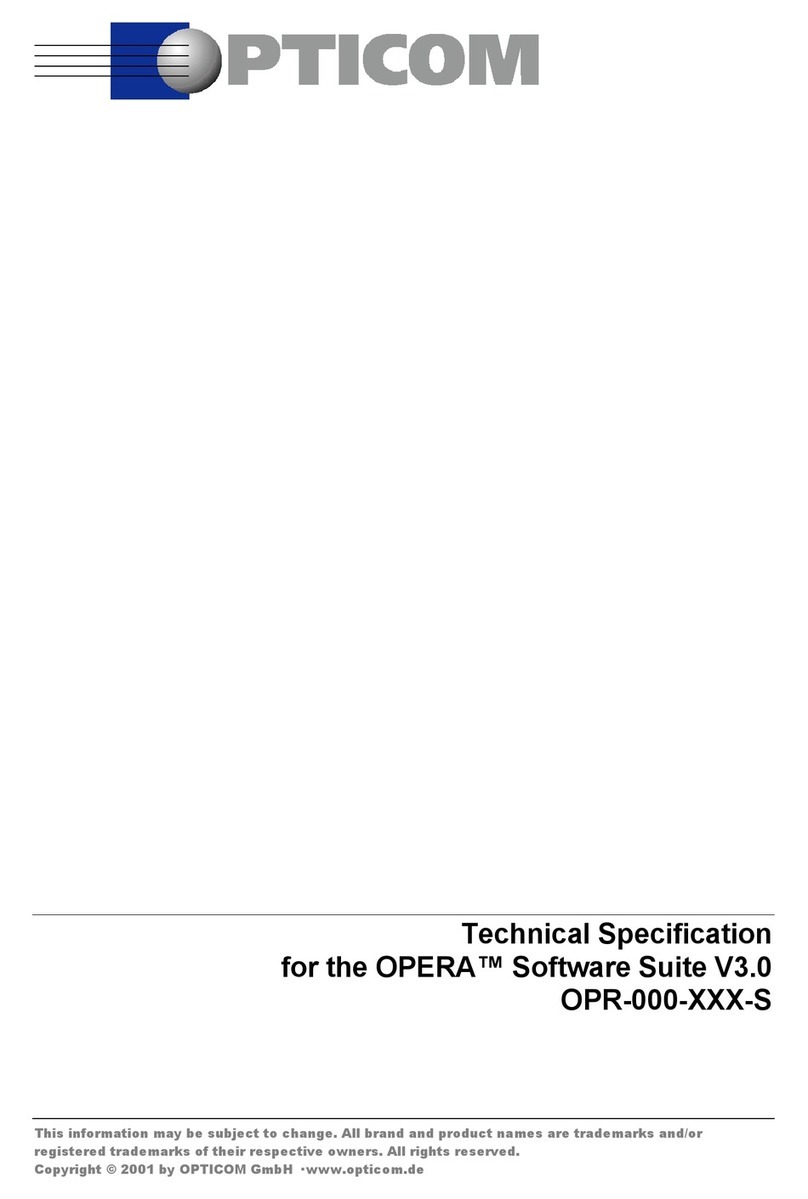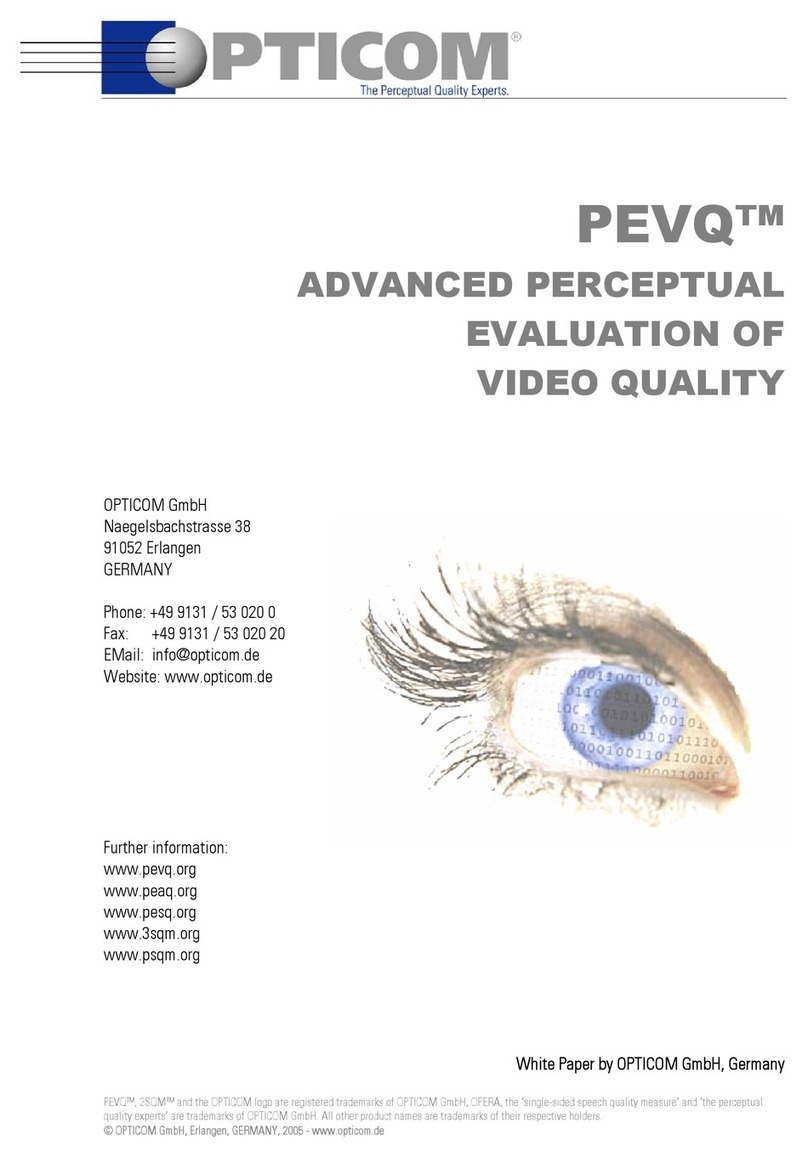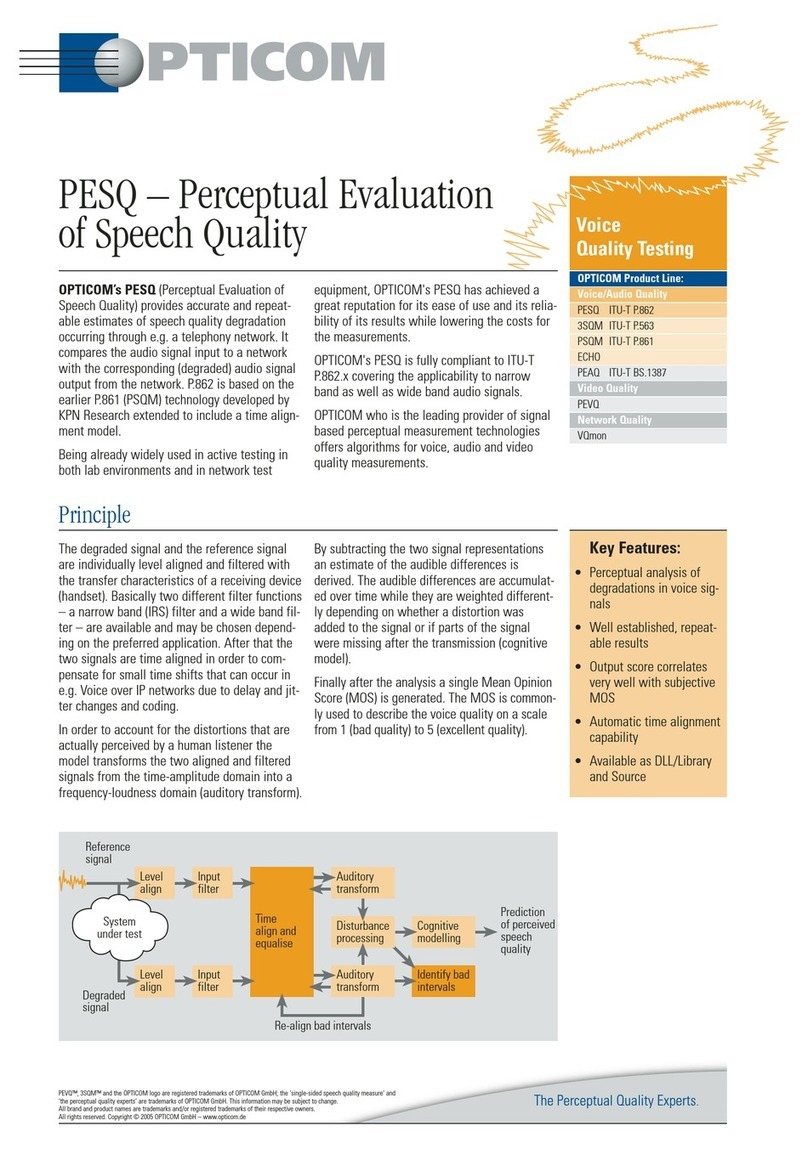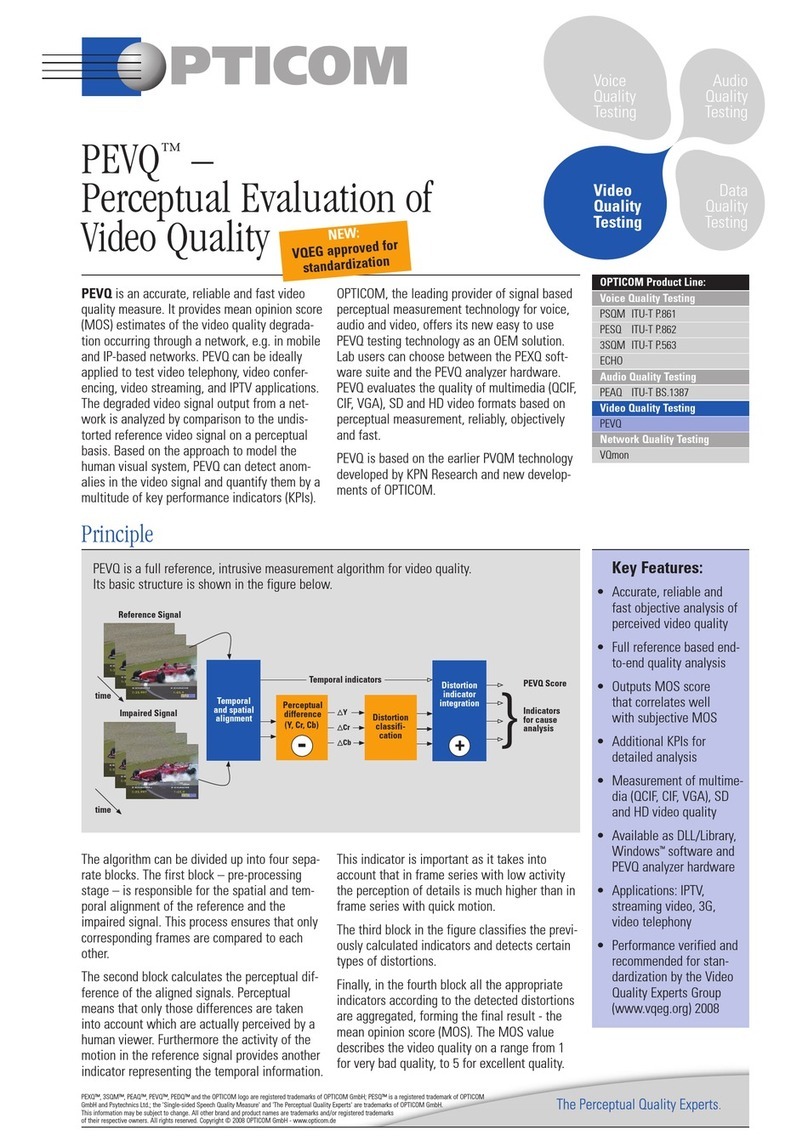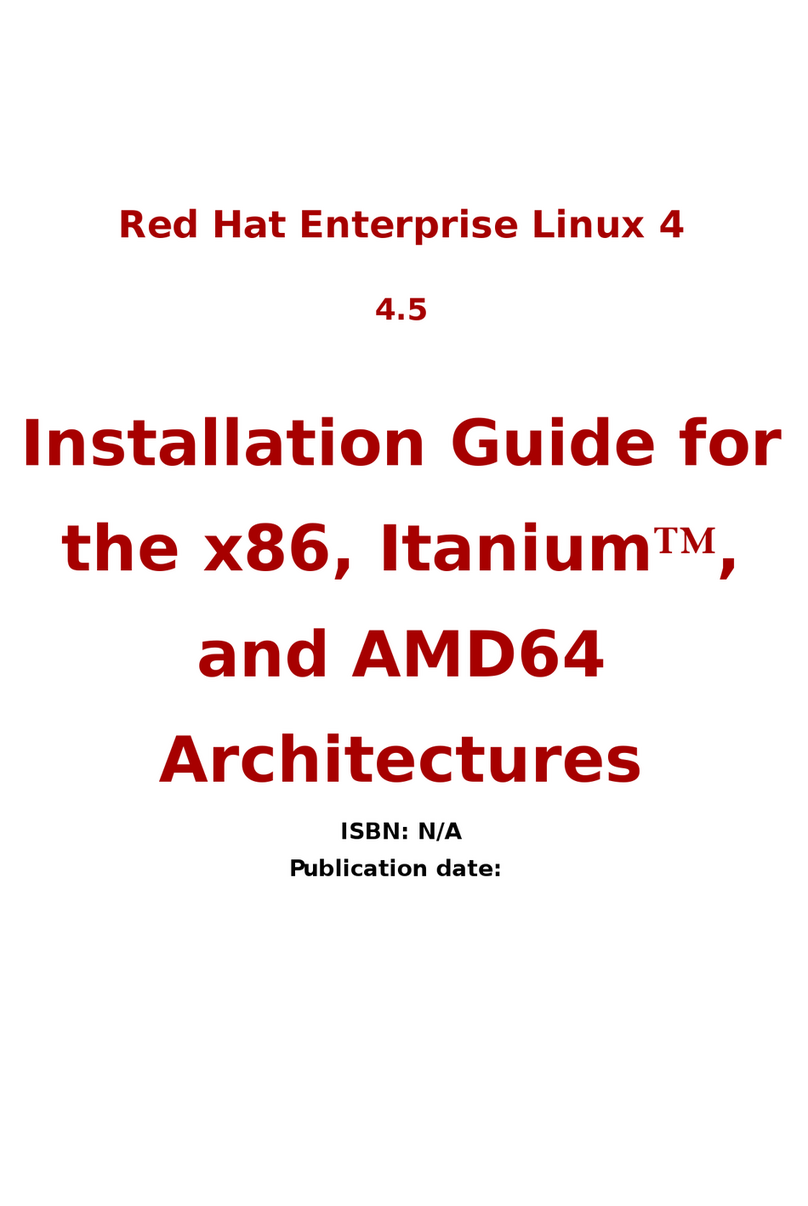Peripheral
ear model
(FFT based)
Peripheral
ear model
(Filterbank based)
Pre-processing
of excitation patterns
Pre-processing
of excitation patterns
Calculate model
output values
Calculate quality measure
(artificial neural network)
Excitation patterns, specific loudness patterns,
modulation patterns, error signal
Excitation patterns, specific loudness patterns,
modulation patterns
Playback level Playback level
Input signals
(Reference and signal under test)
Distortion index Objective difference grade
Specifications
Functionality
• ITU-R BS.1387-1 Perceptual Evaluation of
Audio Quality, with mapping to ODG scale
(0=imperceptible, … 4=very annoying)
Input
• 16 bit linear audio sampled at 44.1kHz and
48kHz
• Input audio files 10 to 20 seconds in length
Output
• Objective Difference Grade (ODG)
• Distortion Index (DI)
• PEAQ Basic Model Output Values:
Modulation changes, loudness of distortions,
Bandwidths of Signals, Frequency of audible
distortions, Noise-to-mask ratio, Detection
probability, Harmonic structure of error
• PEAQ Advanced Model Output Values:
Loudness of distortion, Changes in modula-
tion, Linear distortions, Noise-to-mask ratio,
Harmonic structure of error
Complexity
• PEAQ Basic real-time
• PEAQ Advanced needs about four times the
computational resources as PEAQ Basic
• Floating point library required
Platform
• Windows
(others on request)
PEAQ - Perceptual Evaluation of Audio Quality
PEVQ™, 3SQM™ and the OPTICOM logo are registered trademarks of OPTICOM GmbH; the ‘single-sided speech quality measure’ and
‘the perceptual quality experts’ are trademarks of OPTICOM GmbH. This information may be subject to change.
All brand and product names are trademarks and/or registered trademarks of their respective owners.
All rights reserved. Copyright © 2005 OPTICOM GmbH – www.opticom.de
About OPTICOM
With PSQM, PESQ and PEAQ,
OPTICOM GmbH, the pioneer
in perceptual quality testing
has been providing three
international world-class
standards for voice and audio
quality measurement since
its foundation in 1995. With
their new single-sided
speech quality measure
3SQM™, a joint development
with partners, the perceptual
experts from Germany now
presented their fourth ITU
standard. At its 10th anniver-
sary, the presentation of the
new PEVQ™ video measure
leverages the company’s
huge experience towards the
multimedia testing domain.
Recognized an industry refer-
ence, OPTICOM’s OPERA
voice/audio quality test tools
are available to users world
wide. And while specialized
on OEM customers in particu-
lar, the directory of OEM
licensees today reads like the
‘Who-is-Who’ of the
Telecoms industry. OPTICOM
is a privately held company
located in Erlangen, Germany.
Sales Contacts:
OPTICOM GmbH
Nägelsbachstraße 38
91052 Erlangen, GERMANY
Phone: +49-9131/53020-0
Fax: +49-9131/53020-20
www.opticom.de
North America:
Telchemy Inc.
Phone +1-770-614-6944
JDSU - Acterna U.S.
Phone +1-301 353 1560 2850
Europe, Latin America,
Middle East & Africa,
Asia Pacific, CIS Countries:
JDSU - Acterna
Germany GmbH
Phone: +49-7121 86 2222
Through our distributor net-
work, we are represented in
more than 80 countries. To find
your local sales office, please
PEAQ comes in two versions: PEAQ Basic for
real-time measurements and PEAQ Advanced
for detailed analysis in non-real-time environ-
ments. The main difference of the two models
lies in the used ear models and the set of mod-
ule output values to calculate a final quality
score.
Typical applications for PEAQ are: Assessment
of implementations, perceptual quality line up,
online monitoring, equipment or connection sta-
tus, codec identification, codec development,
network planning and aid to subjective assess-
ment.
